Contents
Panus ear-shaped is one of the varieties of fruiting bodies that grow in forests. An accurate description and photos allow you to identify the mushroom by its appearance, and then decide on its collection.
What does panus auricularis look like?
Another name for the fruiting body is the ear-shaped sawfly. It belongs to the polypore family.
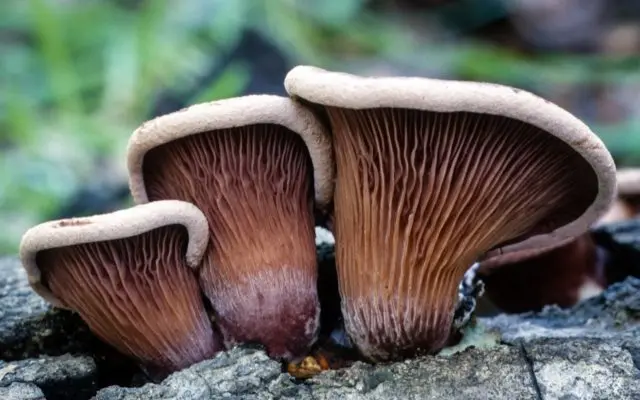
Cap Description
In the ear-shaped sawfly, the cap diameter varies from 4 to 10 cm. In young representatives, it is lilac with a reddish color, but as the fungus grows, it changes color to brown. Its shape is irregular: outwardly it resembles a funnel or shell with wavy, slightly turned inside edges. To the touch it is hard, leathery, without fluff.
The plates of the fruiting body are narrow in shape. They are hard to the touch, have a lilac-pinkish tint. Their color changes to brown as they grow.
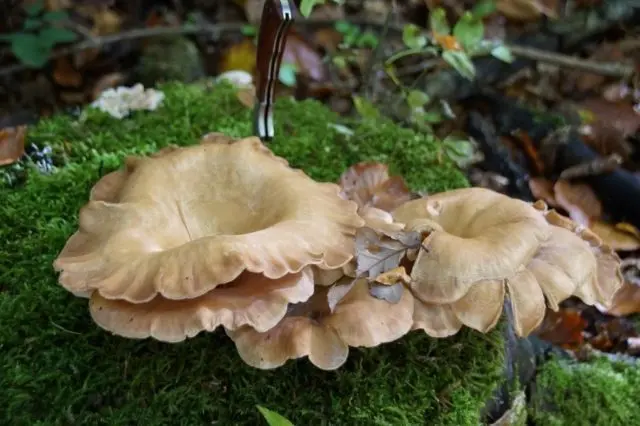
Description of the leg
The leg of the sawfly is short and strong, reaches 2 cm in thickness. Its height is no more than 5 cm. At the base, the leg is narrowed, in relation to the hat it is located almost in a lateral position.

Where and how to grow
The main place of growth of the ear-shaped panus is deciduous forests, mainly on aspens and birches. Most often it is found on fallen dead trees, where it grows in voluminous mycelium. The fruiting period lasts for the summer and autumn months.
Is the mushroom edible or not?
The ear-shaped panus is conditionally edible, it is not poisonous, so the mushroom picker who eats it will not do harm. The use of sawfly is possible in pickled or fresh form. It is also used in cheese making in Georgia.
Young specimens with a lilac color should be collected for food: adult sawflies are ear-shaped brown in color, very bitter. Their flesh is thin, leathery, has no pronounced smell and taste. Mushroom pickers prefer to use the harvest for soups and main courses.
A sharp knife should be used to collect the fruiting bodies.
Twins and their differences
In the forests, you can confuse a mushroom with oyster mushroom. It differs from the ear-shaped panus in color, depending on age, the hat changes color from white to grey-buff. The leg of the double is pronounced, reaches a length of 8 cm. Oyster mushroom is suitable for eating. The harvested crop can be consumed fresh, pickled.
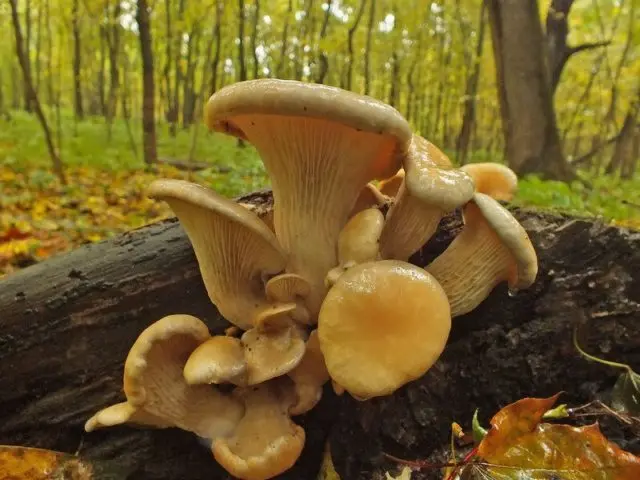
It has an external resemblance to the ear-shaped pannus and oyster mushroom. It is distinguished by a large hat, reaching 15 cm in diameter, of a light, whitish-gray hue. As the oyster mushroom grows, its color changes to yellowish. The shape of the cap is fan-shaped, the edges are directed upwards. The fruiting body is edible and grows in deciduous forests.
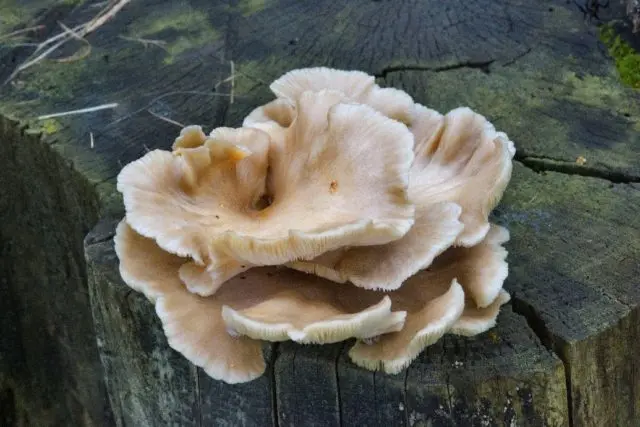
Similar in appearance to the ear-shaped panus and with oyster mushroom (head). The hat, 5 to 15 cm in diameter, is funnel-shaped, with tucked edges. The shade of this representative is the most diverse: in the forests there are specimens of light ash, gray and yellowish tint. The mushroom picker is placed on dead trees, outwardly it is a multi-tiered structure. The fungus is often cultivated for industrial purposes.
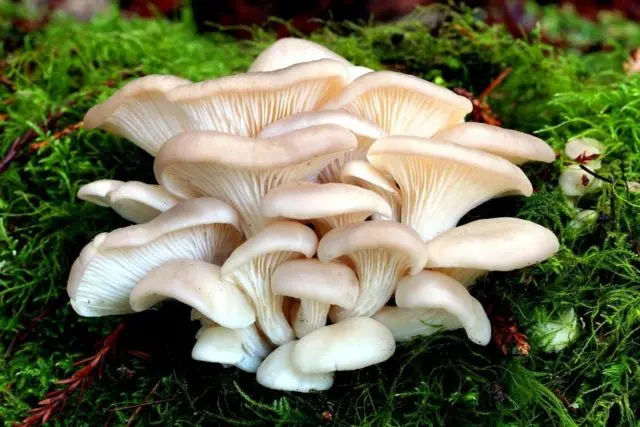
Conclusion
Panus auricularis is an edible mushroom that grows in deciduous forests. You can collect it in the summer and autumn months. The sawfly is suitable for pickling, fresh consumption.









